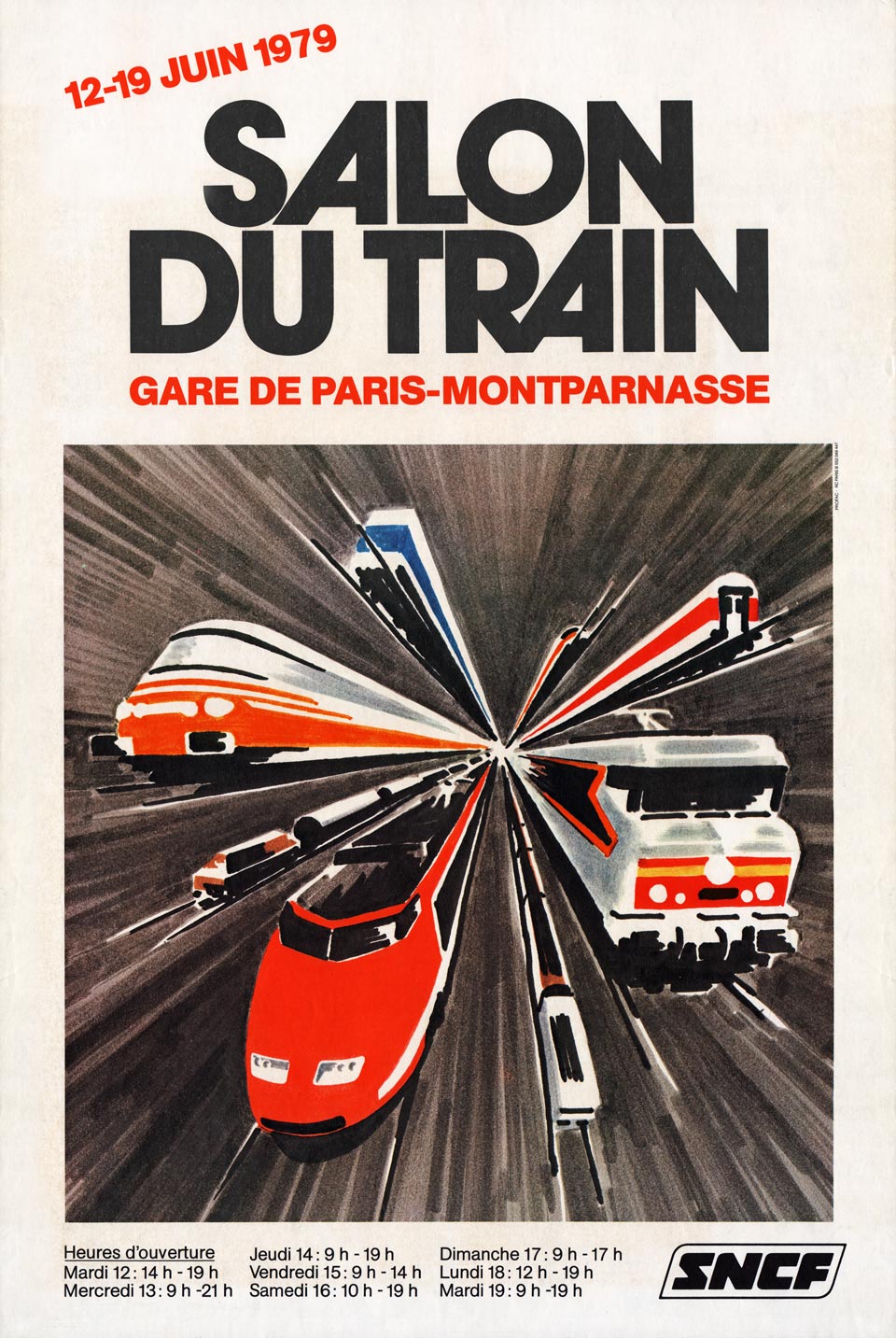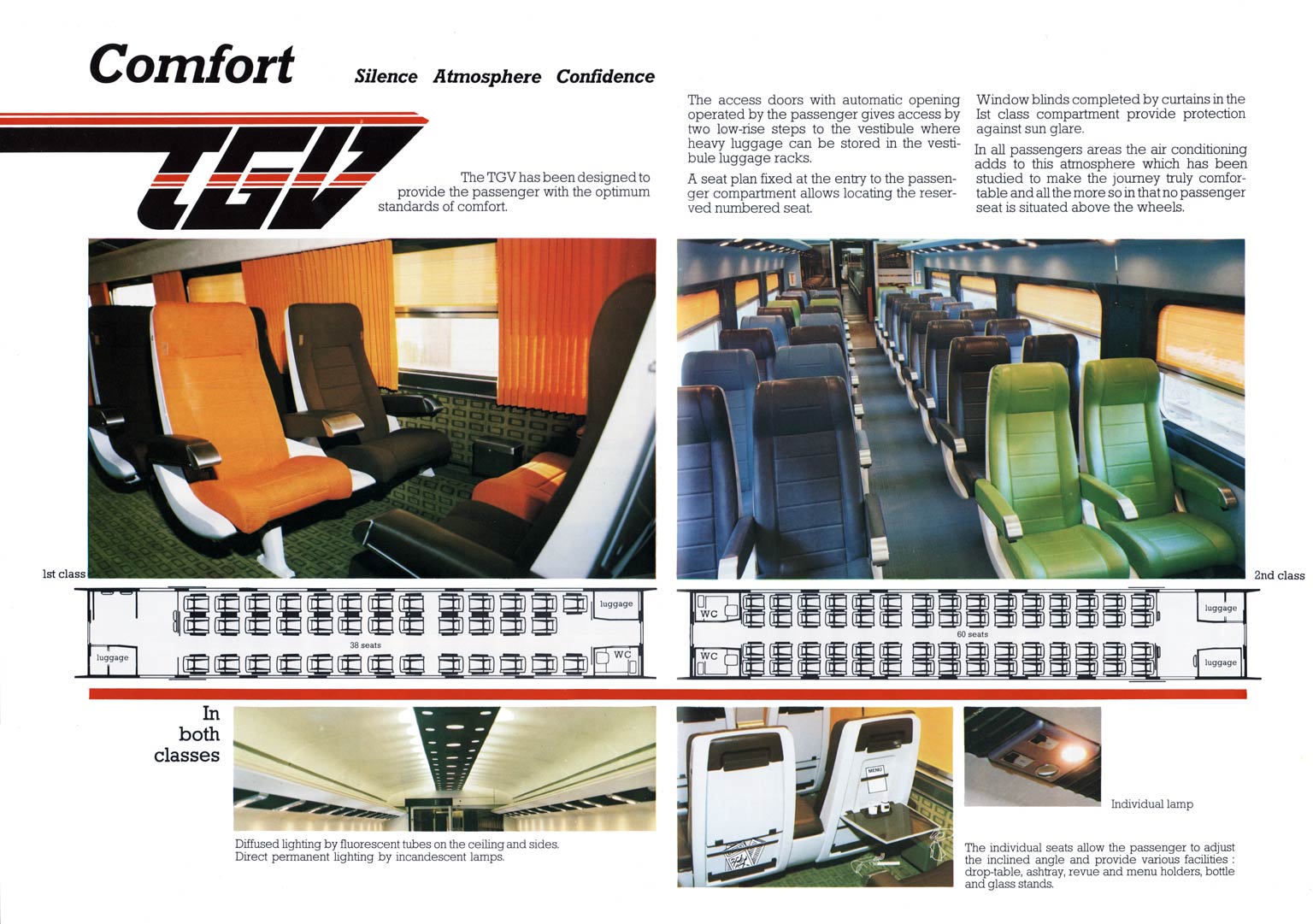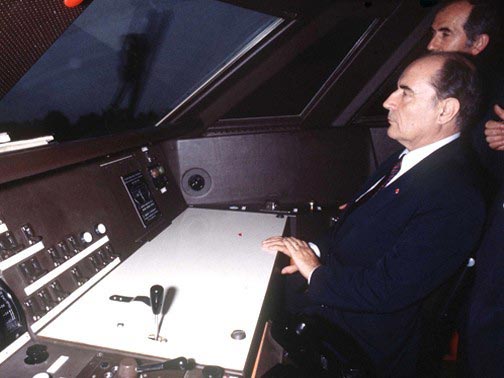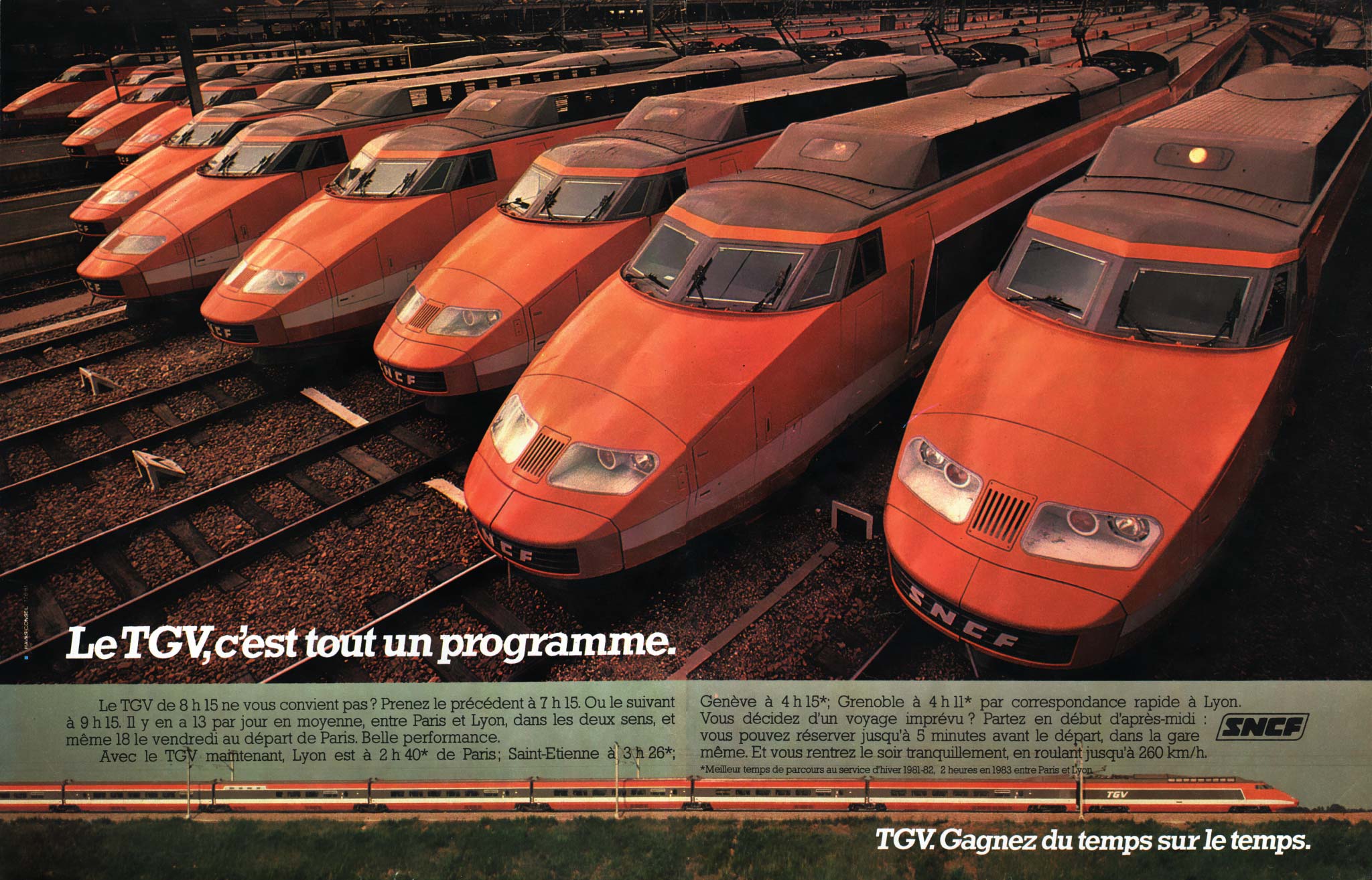Très Grande Vitesse
from Turbotrain to TGV
 Nederlandse versie
Nederlandse versie
France could not stay behind when Japan introduced the Shinkansen bullet train in the early 1960s. High-speed trains had to compete with cars and airplanes, and also reduce the distance between Paris and the rest of the country. In 1966 the research department of the French railways SNCF started the C03 project: a plan for trains à très grande vitesse on specially constructed new tracks.
Originally, the TGV trains were to be powered by gas turbines. The first prototypes were equipped with these helicopter engines of high power and relatively low weight. After the oil crisis, however, electricity was preferred. Even so, parts of the experimental TGV 001 were used in the final train, which was inaugurated in 1981. Many design elements and the distinct orange livery also remained.
Turbotrain

In 1967 the SNCF introduced a top speed of 200 km/h on long-distance services, such as Le Capitole from Paris to Toulouse. This was the maximum achievable speed with existing technology. At higher speeds the contact between current collectors and catenary would become unstable. To solve this problem the Turbotrain was conceived, using gas turbines as generators for electric motors. These kerosene-fueled helicopter engines had a higher power output in proportion to their weight than heavy diesel engines.
In 1967 the SNCF converted a diesel railcar into a prototype: the Turbotrain TGS (Turbine à gaz spéciale), provided with a Turbomeca turbine. Extensive tests were performed and the experimental train reached a record speed of 252 km/h in 1971. The Turbotrain was considered an epitome of French engineering, similar to the Concorde plane from the same period.
TGV 001
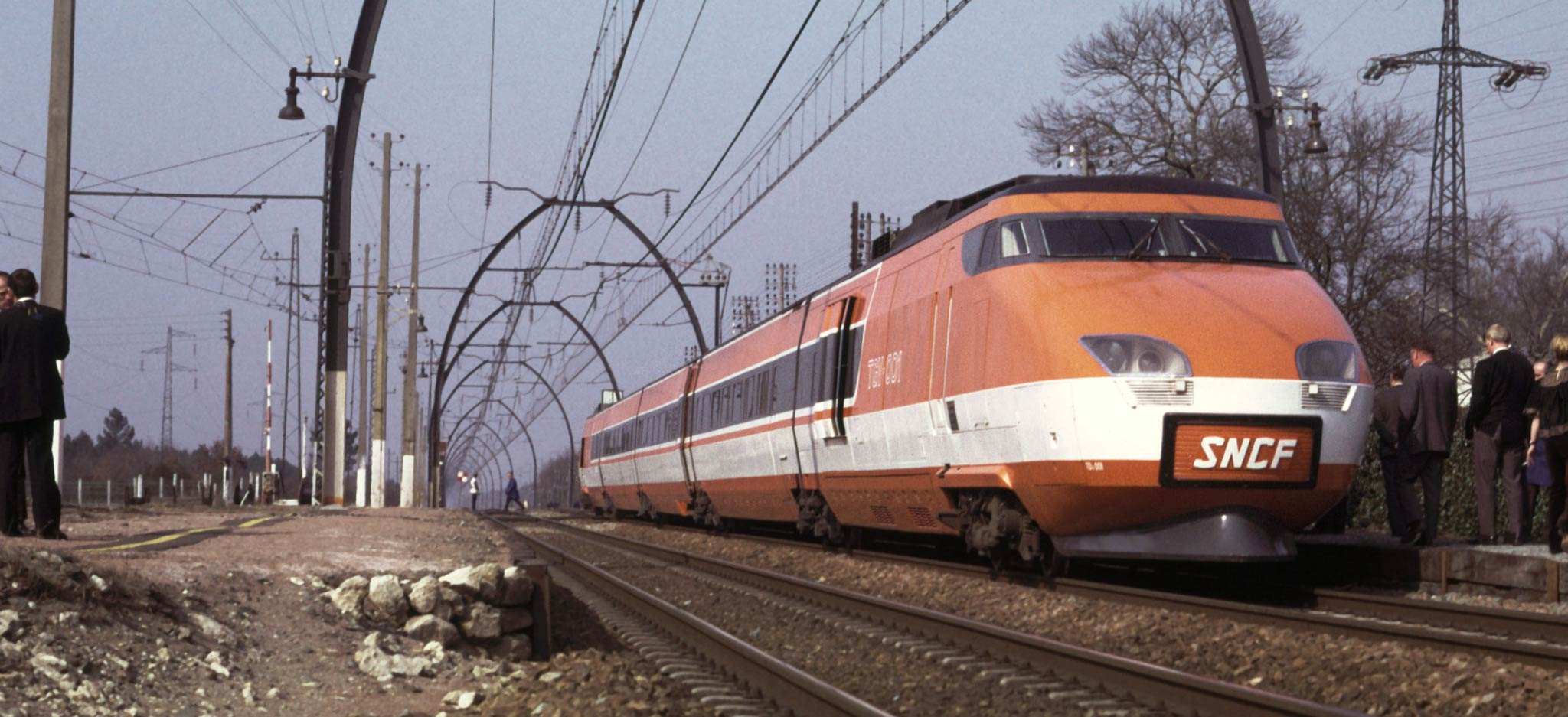
Following the success of the Turbotrain TGS, development of a faster prototype at 300 km/h started in 1969. This TGV 001 was produced by Alsthom and delivered in 1972. Unlike the first Turbotrain it was not just a technical test. Design, furnishing and facilities were also assessed in the full 5-piece trainset counting 244 seats.
In more than 5,000 trial runs covering 500,000 kilometers, new brakes, aerodynamics and security systems were tested. Many elements would later be used in the final TGV train. This also applied to the Jacobs bogies on the passage between two carriages, adding extra stability and minimizing derailment risk. The TGV 001 achieved a top speed of 318 km/h in 1972, still the world record for gas turbine trains.

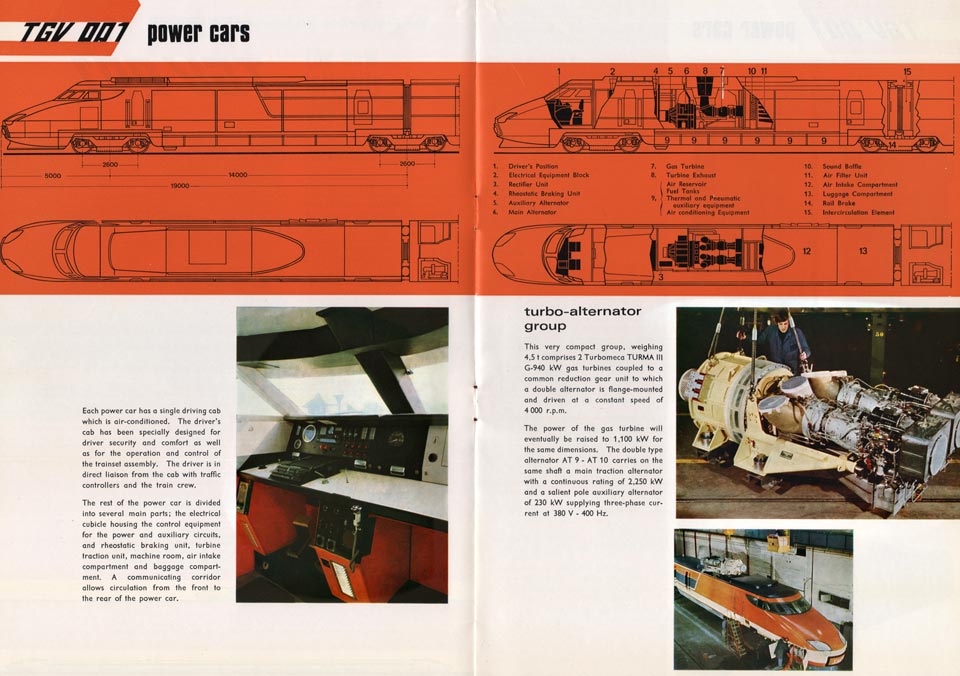
Recently everyone could see the striking silhouette of the TGV 001 in newspapers or on TV — a mechanical thoroughbred, built for speed. But to see it here, to touch it, to enjoy the beauty of its lines and — even better — to be allowed to enter, not without photographing the engine's orange nose first, makes the investment worthwhile already.
Inside, visitors are parading continuously between the two rows of seats, separated by a white cord. Comfortable seating, carpets, low ceilings, small windows with curtains make for a whole new atmosphere, irresistibly reminiscent of an airplane cabin.
Zébulon
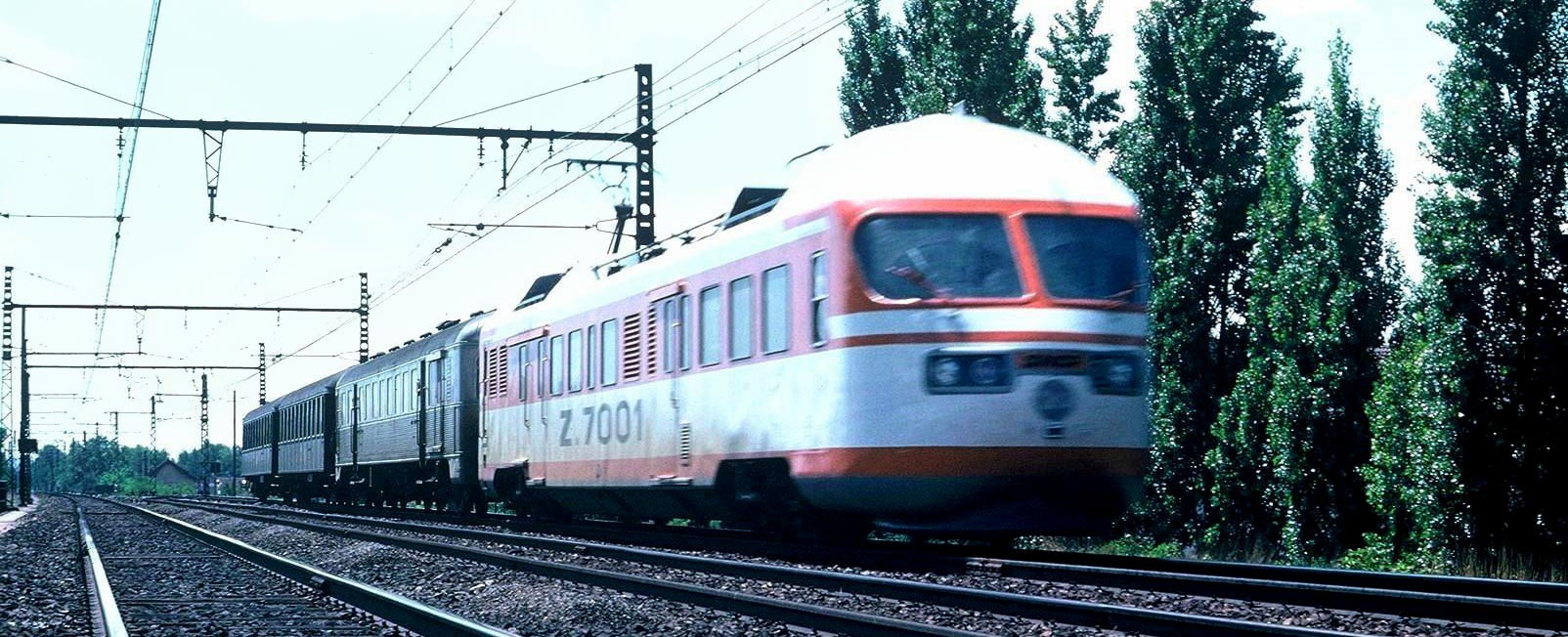
After the 1973 oil crisis the SNCF adjusted the plan for high-speed trains and changed gas turbines for electric traction using overhead lines. France was building new nuclear power plants to be less dependent on oil. In other words, the TGV had to run on uranium instead of kerosene.
But first the problem of current collection at high speed had to be solved. For this purpose the electric prototype Z.7001, nicknamed Zébulon, was built in 1974. It had a new type of pantograph (current collector) with two stages, suitable for high speed. Also, alternative engine mounting reduced a lot of weight. During almost one million kilometers of testing the Zébulon reached a top speed of 309 km/h.
TGV Paris Sud Est

The final TGV PSE consisted of two electric power cars with eight carriages in between, holding 345 seats. The entire train was 200 meters long and weighed 385 tons. The first two trainsets were delivered in 1978 and were nicknamed Patrick and Sophie. They were tested extensively on the Strasbourg-Colmar line. The TGV was shown to the public at the Salon du Train Paris-Montparnasse in June 1979.
In 1980 the first TGV started service between Paris and Lyon, still using old tracks. The new high-speed line was not yet finished. On an already completed part near Pasilly, TGV trainset 16 established the world speed record for rail transport at 380 km/h in early 1981. In regular service speed would be limited to 260 km/h, later to 270 km/h.

LGV Sud-Est
A key component of the TGV concept was the costly construction of separate high-speed lines. The first plans for the LGV (Ligne à Grande Vitesse) Paris-Lyon date from 1969. In 1974 the Pompidou government decided for the construction, a national prestige project that started in 1976 at Écuisses (Saône-et Loire). After four years the first test runs could be performed near Cluny at 280 km/h.
In September 1981 President François Mitterrand officially inaugurated the first section of the Paris-Lyon high-speed line. Only a year later the number of passengers stood at 10 million and the TGV service was continued to Marseille (on existing tracks). In 1983 the last section of the line was finished near Paris, reducing the Paris-Lyon journey time to a spectacular 2 hours. The next year the TGV became international with a service to Lausanne, Switzerland (partly over regular tracks).
TGV network
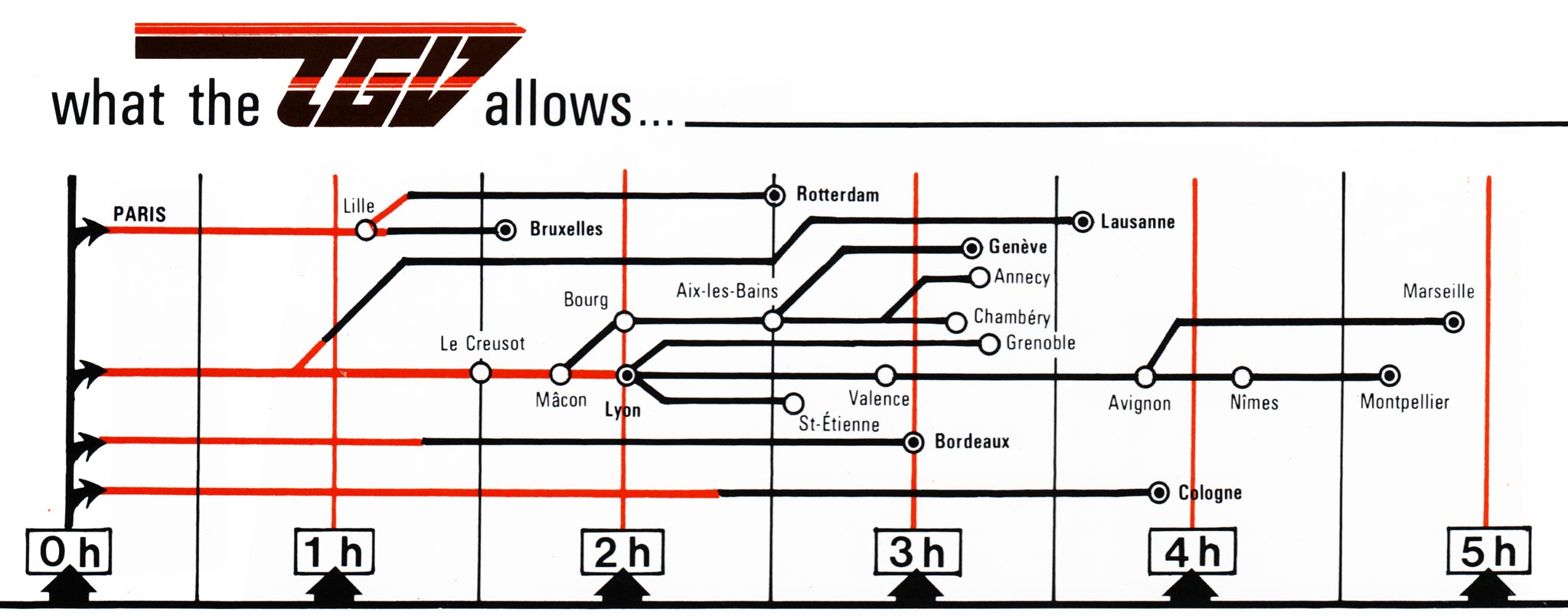
The first TGV service was the beginning of an extensive high-speed network built over the next 25 years. In 1989 the LGV Atlantique opened, running from Paris in the direction of Brittany. A new train, the TGV Atlantique, was designed by Roger Tallon, still drawing upon Jacques Cooper's design. The new model raised the speed record to 515 km/h. Later on the TGV Duplex was introduced, a double-decker train with 45% more capacity.
In the 1990s the LGVs Rhône-Alpes and Nord were constructed, and in the early 21st century the LGVs Est and Méditerranée followed. On the latter Marseille can be reached from Paris in only 3 hours. The TGV-based Thalys links Paris to Brussels, Amsterdam and Cologne. The Eurostar to London was also derived from the TGV.

